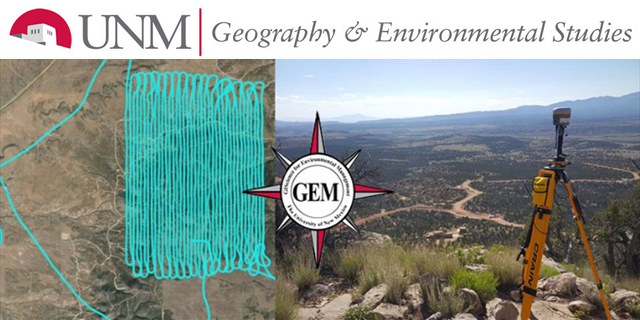
Geography ETDs
Publication Date
8-25-2016
Abstract
Piñon-juniper communities exist on mid-elevation mountain ranges throughout the southwestern United States. Drought adapted, these species have lived with climatic stochasticity since the end of the Pleistocene. However, increasing temperatures and drought within the last two decades have stressed this community beyond its adaptive limits. With increased drought-induced stress, piñon show greater vulnerability to die-off than juniper. Widespread piñon die-off occurred during 2002-2004 from extreme drought in northern New Mexico with minimal juniper die-off. This study quantified the differential piñon and juniper mortality during the 2010-2013 drought at a site in central New Mexico by performing multiple endmember spectral mixture analysis (MESMA) on six Landsat images from 2009 through 2015 using field-based spectral endmembers collected throughout 2015. An ideal spectral seperability date was identified to maximize separation between constituent land cover classes by calculating NDVI, SAVI, and RENDVI for the five dominant land cover classes at the site (juniper, piñon, dead piñon, herbaceous, and bare soil) and analyzing precipitation and temperature data. Peak seperabililty between land cover classes was determined to occur during the pre-monsoon season between late spring/early summer (May) when no spectral overlap occurred between classes (\u03c3 = 1). The field-based reference endmembers were then used to unmix each image in the study period. Results indicate a 24.6% decline in piñon fractional cover across the study period with a comparable 23.8% increase in dead piñon fractional cover and minimal 5.9% change in juniper fractional cover. Accuracy assessment validation using high spatial resolution (5-8 cm) imagery for 2014 and 2015 showed a high degree of confidence in modeled fractional cover results during 2014 - GV (piñon and juniper together) (R2 = 0.632) and dead piñon (R2 = 0.854), and 2015 - GV (R2 = 0.735) and dead piñon (R2 = 0.881). Results indicate the utility of MESMA to monitor and quantify the differential die-off piñon and juniper at a regional scale as climate change-induced drought and higher temperatures are projected to continue in the Southwest.
Degree Name
Geography
Department Name
Geography
Level of Degree
Masters
First Committee Member (Chair)
Lippitt, Christopher
Second Committee Member
Litvak, Marcy
Document Type
Thesis
Project Sponsors
Department of Geography and Environmental Studies, GIScience for Environmental Studies (GEM) Lab, Litvak Lab (UNM Department of Biology), and GPSA
Language
English
Keywords
pinon-juniper woodlands, spectroscopy, Landsat, MESMA, drought, land cover change
Recommended Citation
Brewer, William. "ASSESSING DROUGHT-INDUCED CHANGE IN A PI\xd1ON-JUNIPER WOODLAND WITH LANDSAT: A MULTIPLE ENDMEMBER SPECTRAL MIXTURE ANALYSIS APPROACH." (2016). https://digitalrepository.unm.edu/geog_etds/12
